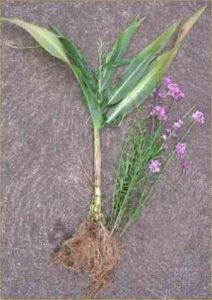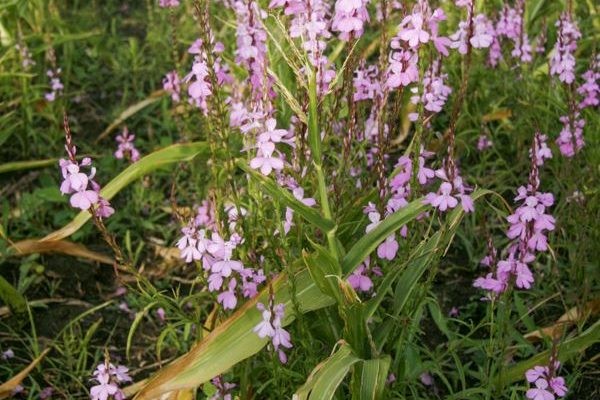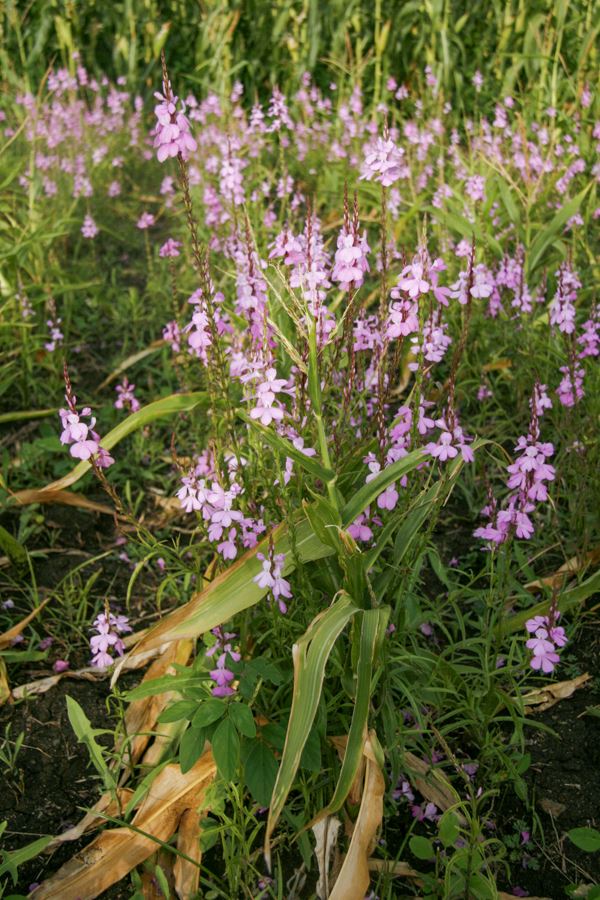Striga or ‘witchweeds’ are parasitic weeds that affect cereal crops in many parts of Africa, reducing production from 30 to 100%, or complete loss of the crop. If maize plants are attacked by both stemborers and striga weed, the yield loss is often 100%. In East Africa, there are two common species of the witchweed, Striga hermonthica and Striga asiatica. Striga hermonthica is common around the Lake Basin, while Striga asiatica is mainly found in the coastal areas. The most affected crops are maize, sorghum, rice and sugarcane.

When a farm is infested with striga, the affected plants seldom grow more than one foot (30 cm) tall. The weed does not put roots into the soil so as to grow on its own but grows by attaching itself onto the host (e.g., maize) plant. Each striga plant can produce up to 20,000 – 50,000 seeds, which lie dormant in the soil until a cereal crop is planted again. This dormancy can last for over 15 years. As striga germinates, its roots grow towards the host crop. They penetrate that crop’s roots and start to draw nutrients from the host. This causes severe stunting of the host crop and yield loss.
Taking into account the peculiar nature of striga seeds, farmers are advised to control it before the weed emerges above the soil. The reason for this is that by the time it emerges, much of the damage to the maize will have been caused.
Although various control methods have been proposed, they are usually not successful. For example, although manual removal of the striga reduces re-infestation, it is considered uneconomical since most damage is done even before the weed emerges. Therefore, any control strategy has to begin within the soil.
If you are a farmer or extension staff looking for practical advice on how to establish and manage a push-pull plot to control stemborers and striga weed download the handbook below. It is expected that the information herein will enhance adoption of the technology and increase maize and livestock productivity while conserving the environment.



